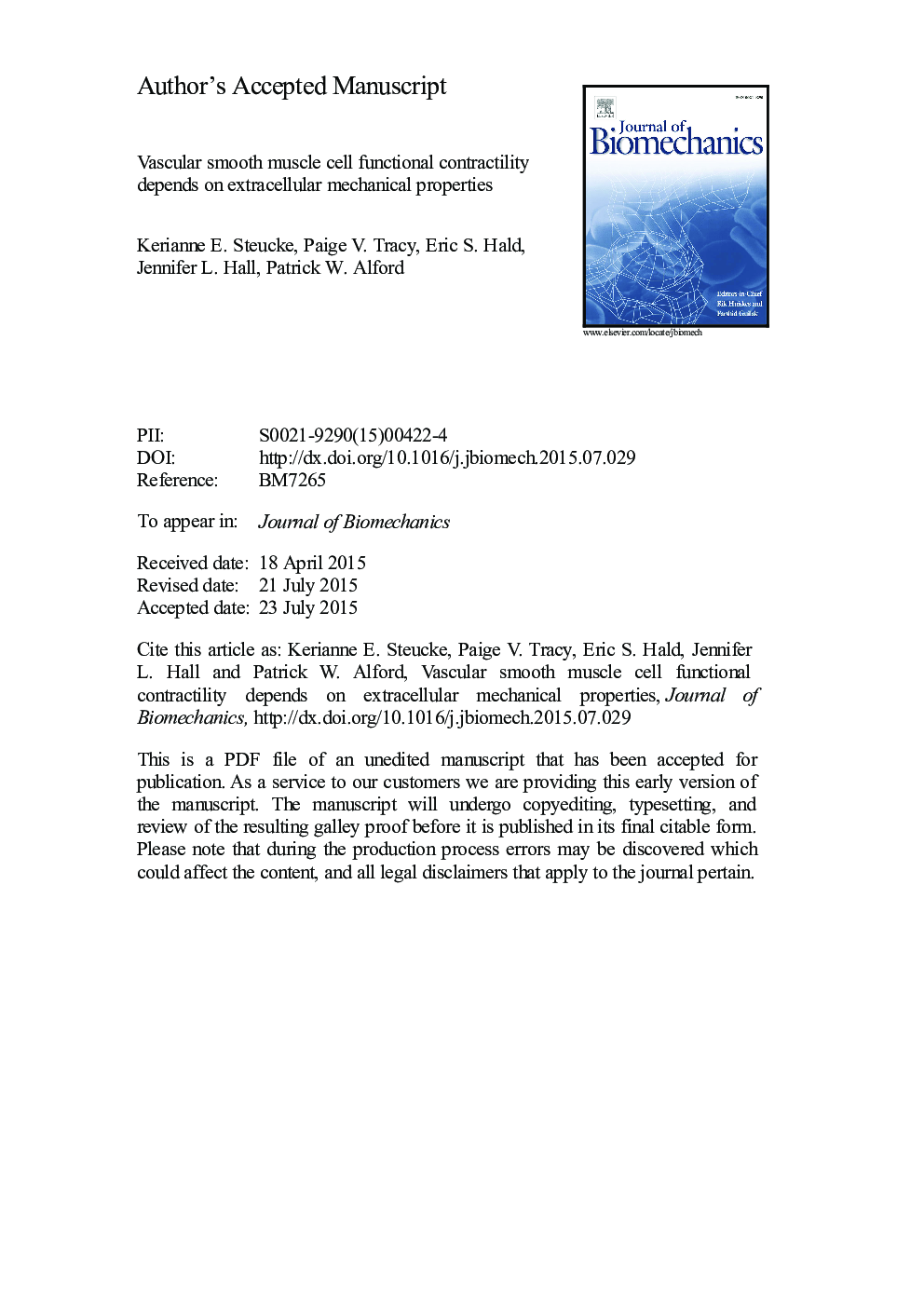| Article ID | Journal | Published Year | Pages | File Type |
|---|---|---|---|---|
| 10431275 | Journal of Biomechanics | 2015 | 33 Pages |
Abstract
Vascular smooth muscle cells' primary function is to maintain vascular homeostasis through active contraction and relaxation. In diseases such as hypertension and atherosclerosis, this function is inhibited concurrent to changes in the mechanical environment surrounding vascular smooth muscle cells. It is well established that cell function and extracellular mechanics are interconnected; variations in substrate modulus affect cell migration, proliferation, and differentiation. To date, it is unknown how the evolving extracellular mechanical environment of vascular smooth muscle cells affects their contractile function. Here, we have built upon previous vascular muscular thin film technology to develop a variable-modulus vascular muscular thin film that measures vascular tissue functional contractility on substrates with a range of pathological and physiological moduli. Using this modified vascular muscular thin film, we found that vascular smooth muscle cells generated greater stress on substrates with higher moduli compared to substrates with lower moduli. We then measured protein markers typically thought to indicate a contractile phenotype in vascular smooth muscle cells and found that phenotype is unaffected by substrate modulus. These data suggest that mechanical properties of vascular smooth muscle cells' extracellular environment directly influence their functional behavior and do so without inducing phenotype switching.
Related Topics
Physical Sciences and Engineering
Engineering
Biomedical Engineering
Authors
Kerianne E. Steucke, Paige V. Tracy, Eric S. Hald, Jennifer L. Hall, Patrick W. Alford,
